When I think of warblers, I think about those I’m most or least likely to see.
Least is easy: Kirtland’s (Setophaga kirtlandii).1 Blackburnian (Setophaga fusca) comes to mind as unlikely, not impossible.
Most likely: Yellow-rumped (Setophaga coronata).
Palm Warbler (Setophaga palmarum) is also reliable. Beautiful and not hard to ID—reddish brown cap.
Year after year I see them earlier and earlier.
They “arrive on breeding grounds in early April and begin nests by early May,” Audubon says. The Cornell Lab elaborates the eastern subspecies “migrates earlier in the spring…in early April.”
Palm Warblers take a minute to warm up to the camera, more accurately I take a minute to warm up to using mine for warblers.
Warblers “appear suddenly, and vanish just as suddenly,”
writes. In April, my bird photography dust has to be shaken off. Winter waterfowl provide a relaxed pace; warblers don’t. Palm Warblers help me get into the swing of things.They’re colorful, often low—look for vibrance on the ground. The Cornell Lab suggests “watch for [the Palm Warbler’s] characteristic tail wagging to pull them out of” groups of birds. They pump their tails like phoebes.
Palm Warblers can help us learn the term: supercilium. Sibley defines it: “feathers that grow on the sides of the head above the eyes of a bird.” An eyebrow. The Palm Warbler’s is easy to notice, “well-defined [and] pale.”
Let’s talk about the bird’s butt. Yellow-rumped Warblers claim yellow rumps; it’s in the name. That doesn’t mean a Palm can’t have yellow on its butt.
Palms have yellow undertail coverts—you could argue a yellow butt, more discreet than the Yellow-rumped’s.
While there’s yellow on a Palm’s butt, it’s hard to confuse one with a Yellow-rumped.
Palm Warblers trill, as do Pine Warblers (Setophaga pinus) and Chipping Sparrows (Spizella passerina).
A Palm’s trill is not as similar to Pine’s or Chipping’s as those two are to each other. They’re are a good pair to start with when learning birdsong, why not throw in Palm.
Eastern Ontario Birding says a Chipping Sparrow’s trill has a “lengthy song bout and dry, mechanical song quality.” Pine Warblers are more “musical,” Palm are more “buzzy”—the latter characterized by a “slow-tempo and buzzy song quality,” neither musical nor mechanical.
I used to call Yellow-rumped Warblers the chickadee of warblers. Having outgrown avian snobbishness, I recognize being the chickadee of warblers as a good thing.
Chickadees are great. Warblers, great. Great thing of great things: Great. If Yellow-rumped is the chickadee of warblers, Palm could be the robin. You know I love robins, and I love Palm Warblers.
American Bird Conservancy lists it as the fourth rarest bird of the continental United States. No warbler has a smaller range.
They “almost exclusively inhabit large, dense stands of young jack pine in Michigan (as well as nearby areas of Wisconsin and Ontario).”


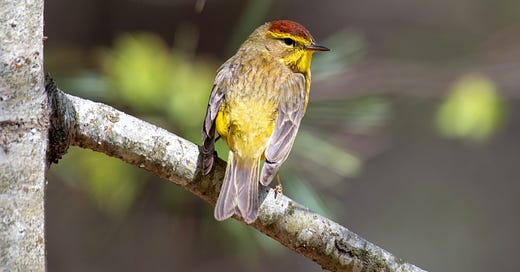



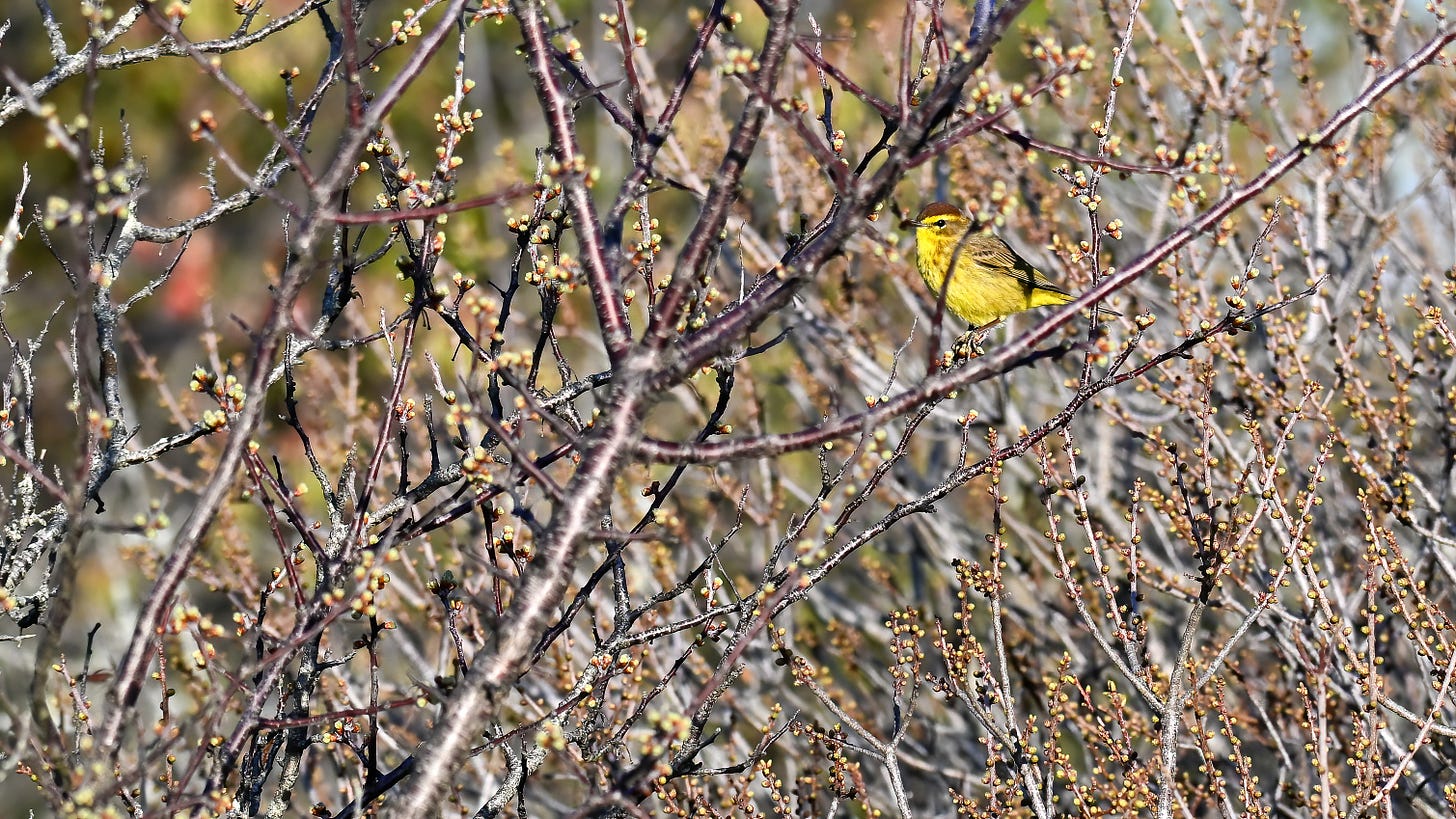


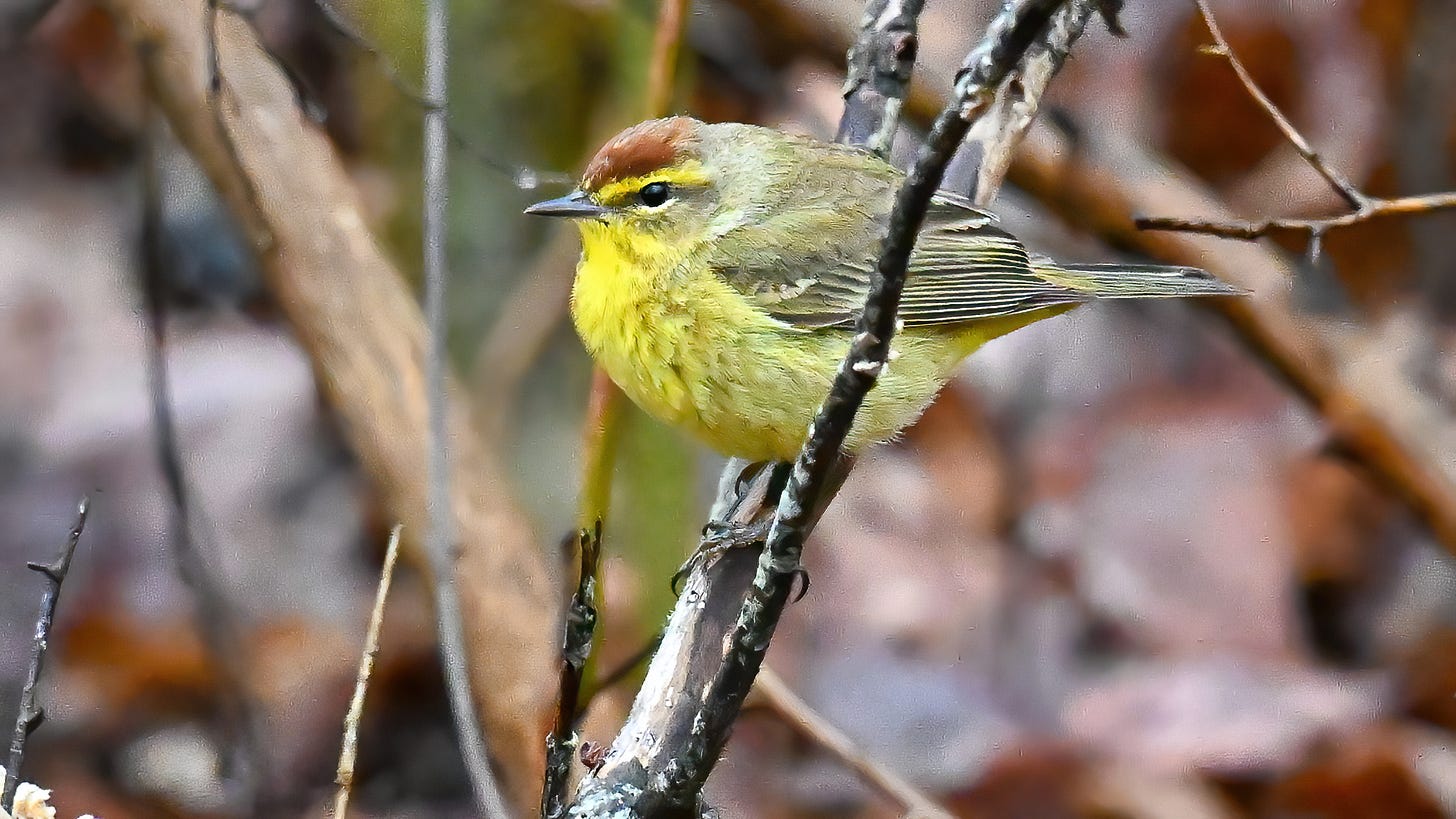
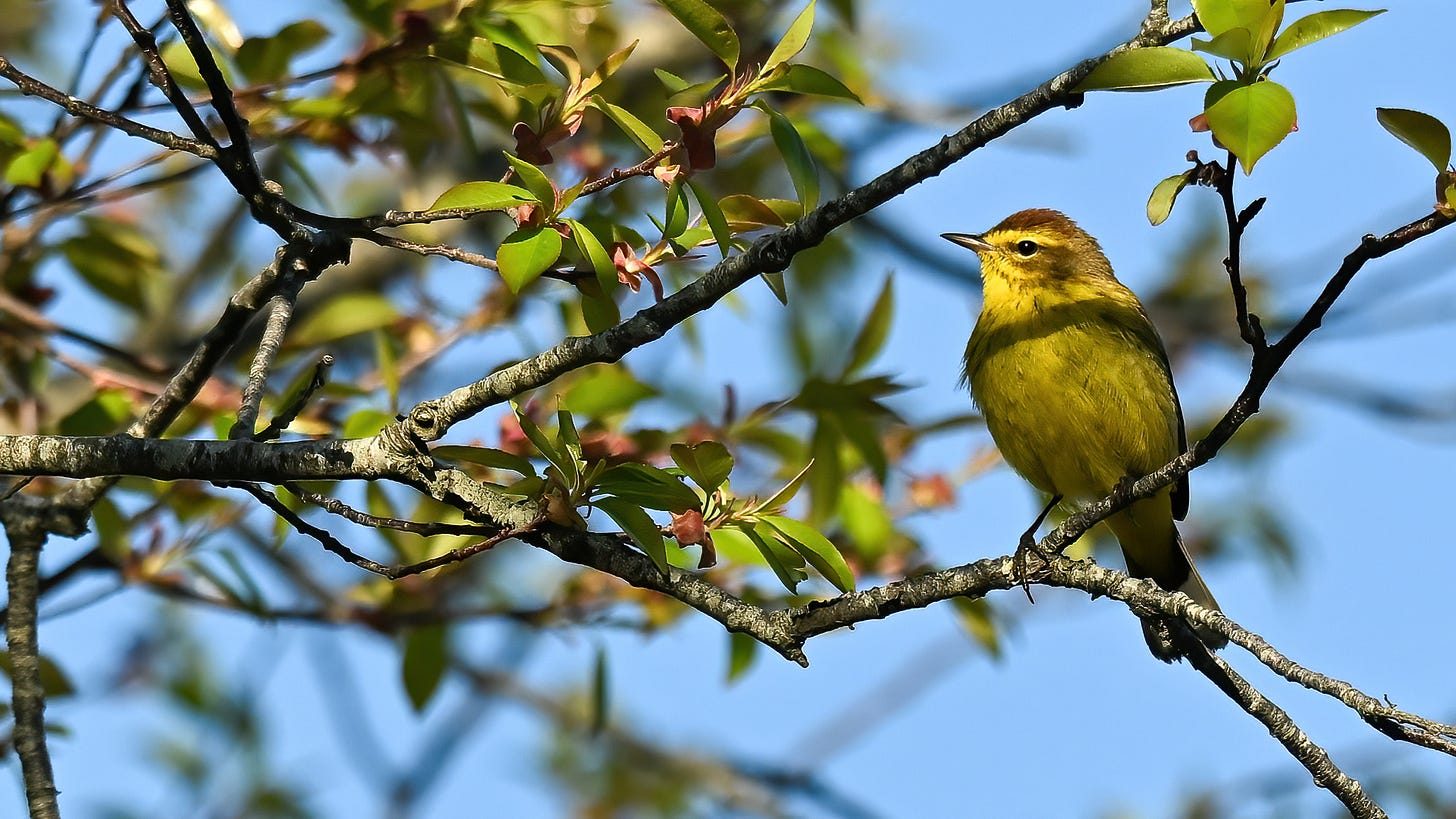

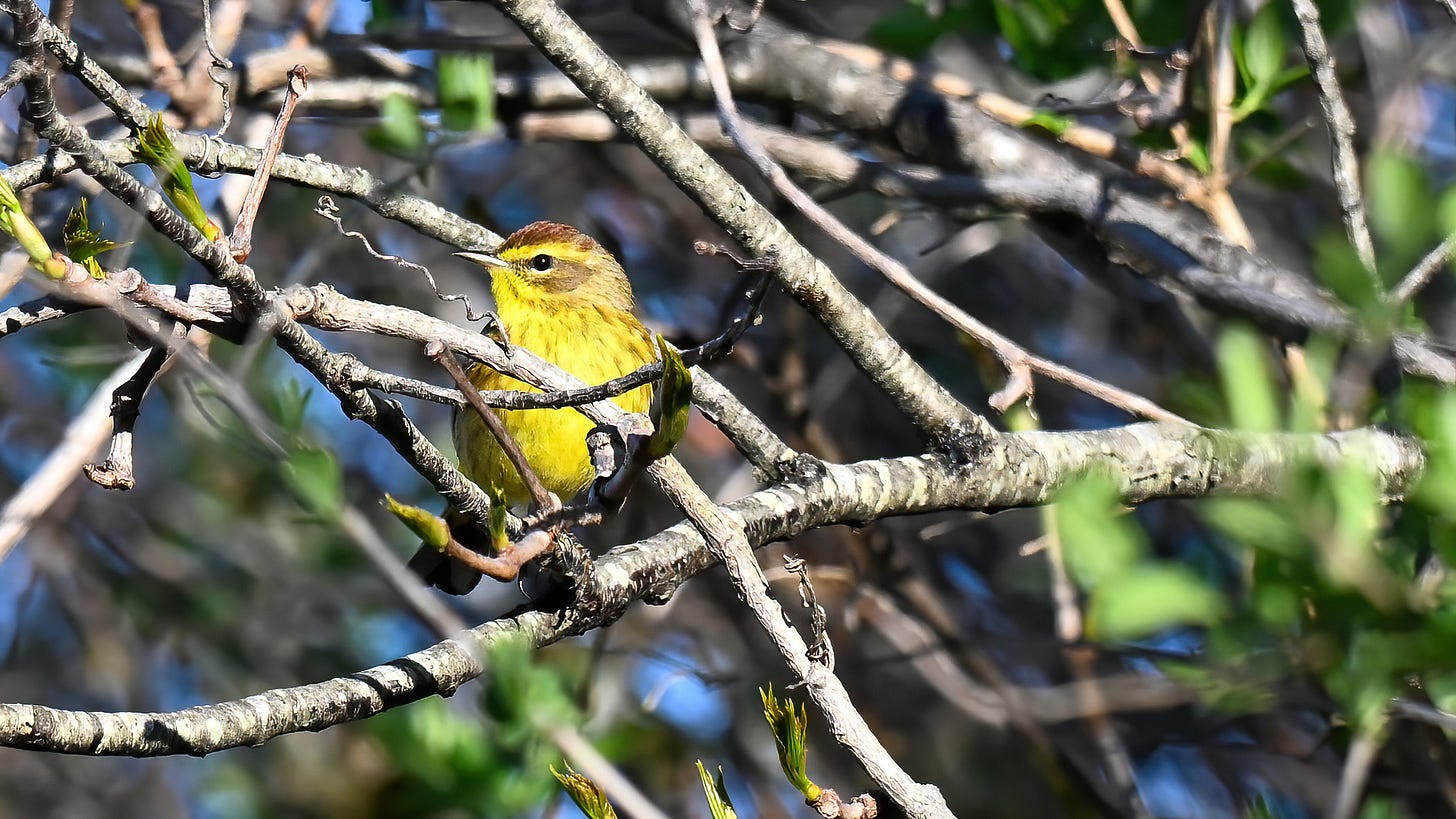
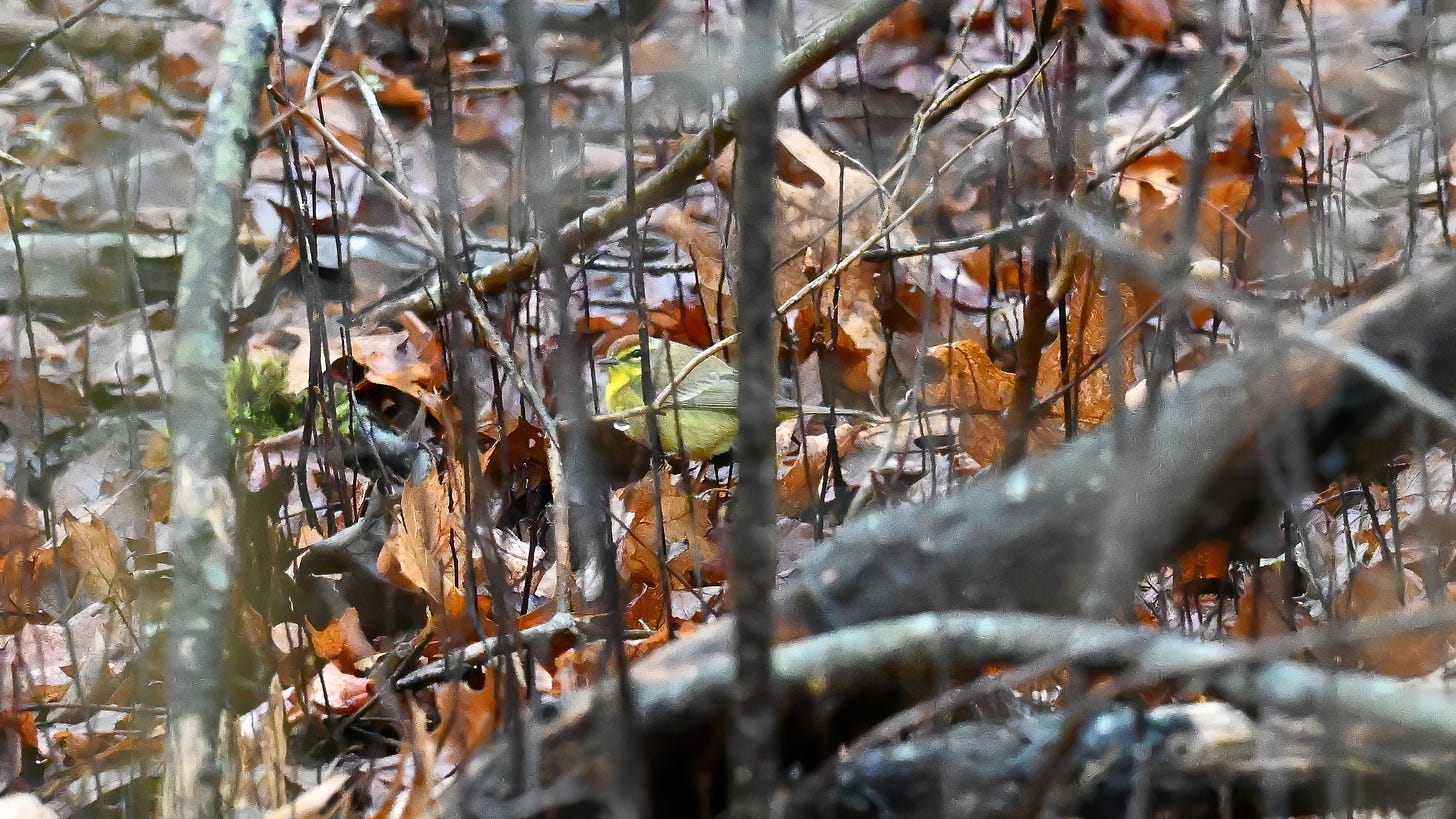
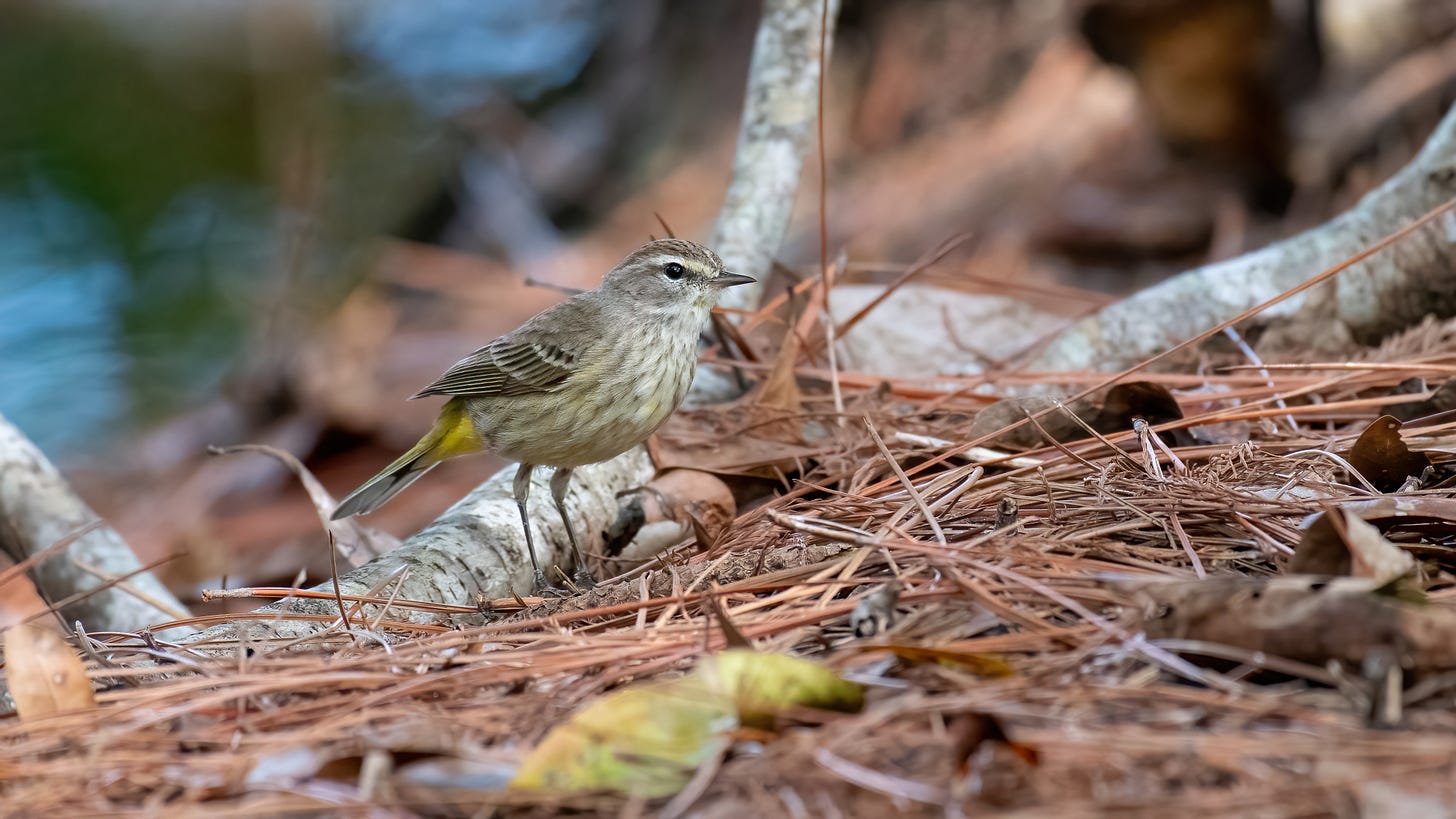
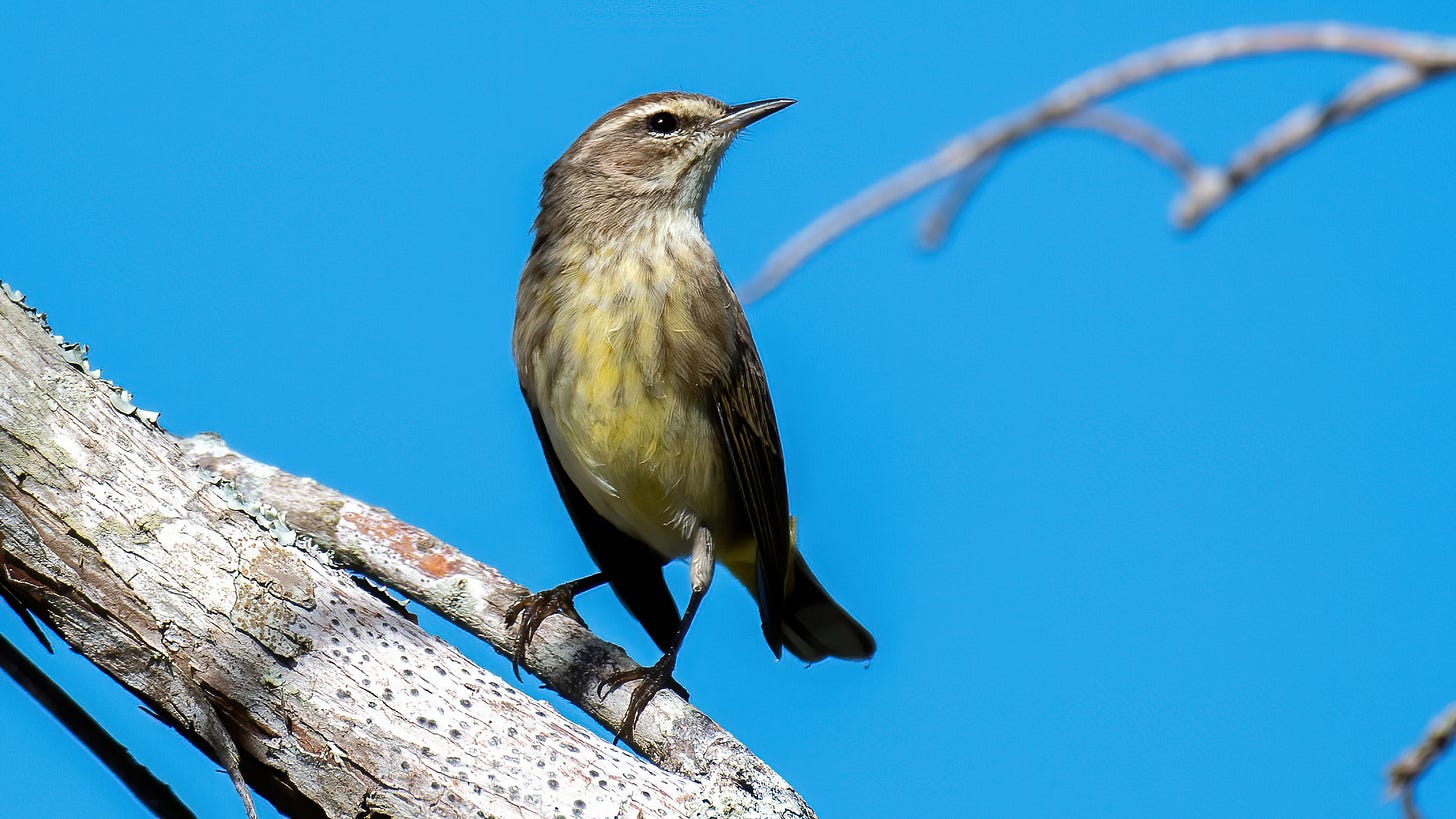

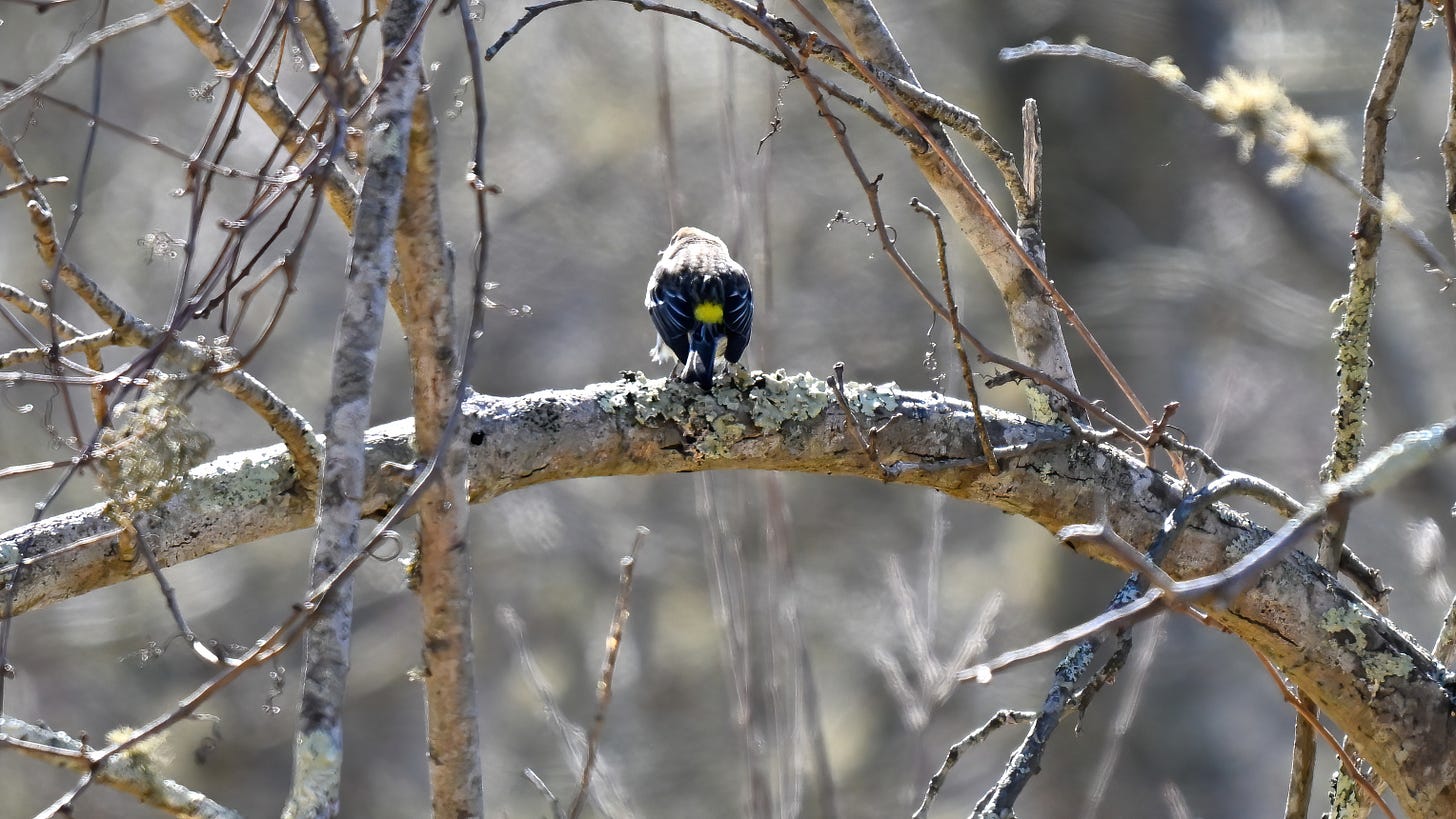
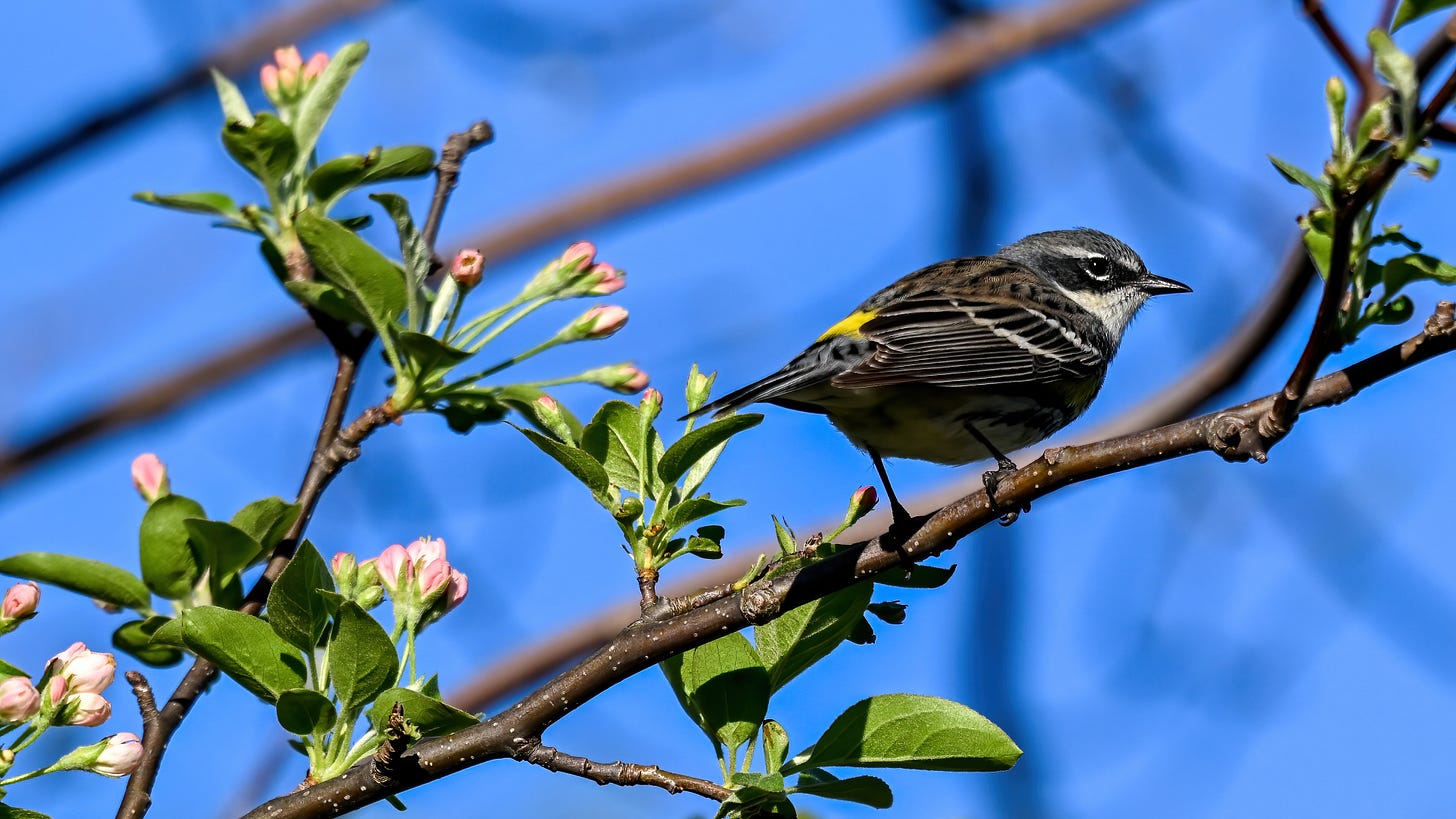
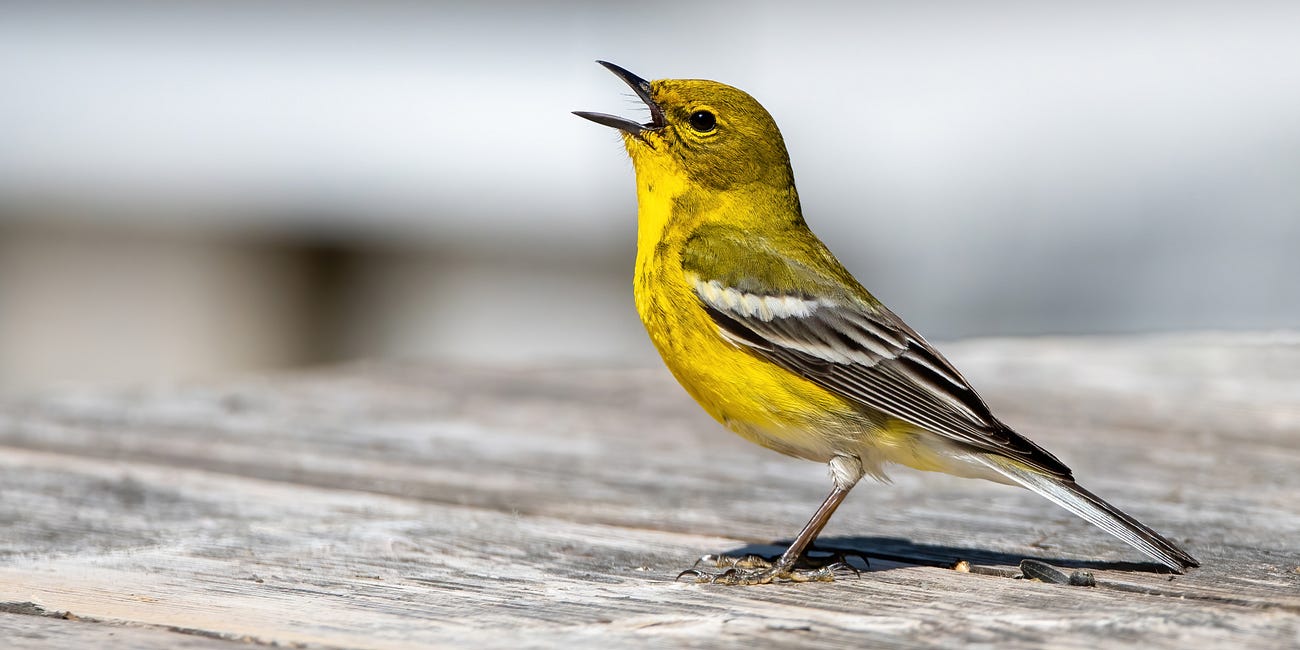
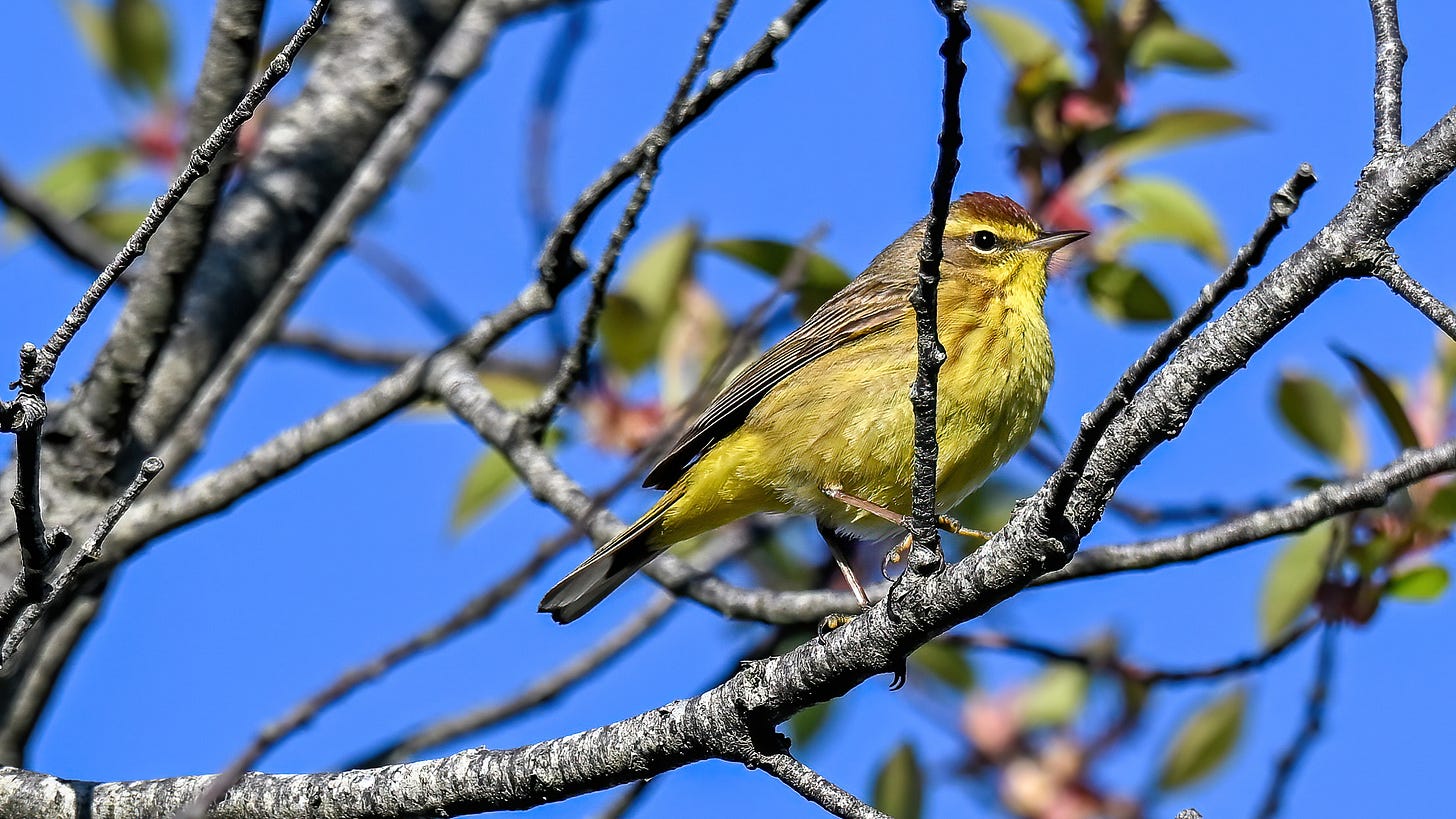
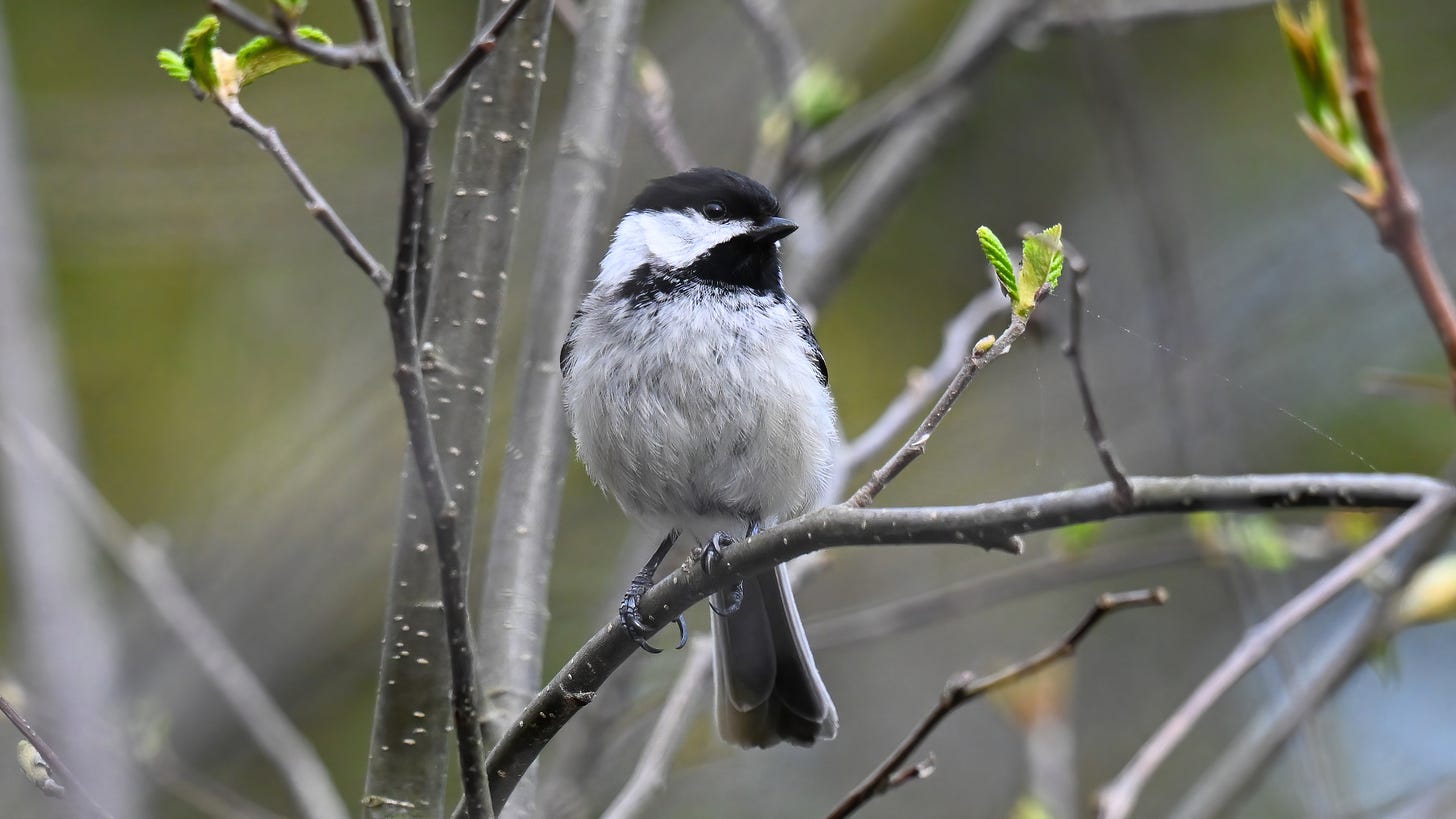


Beautiful. I love to read your posts early in the morning over coffee, kitchen window wide open to hear the birds as accompaniment. This morning a mocking bird is really telling a story! He just told me " budget budget budget, weep weep weep budget weep" And he pegged it utterly. Thank you, James.
Supercilium - I love this word, and even more do I love those little feathers.